If you’re looking to add some curb appeal to your home, consider designing a garden path. Not only will it make your yard more inviting, but it can also be a great way to show off your personality and style. The good news is that you don’t have to spend a lot of money to create a beautiful garden path. In fact, many of the materials you need can be found right in your backyard or at your local hardware store. This guide will offer tips and ideas for creating cheap DIY garden paths on a budget.
Why do you need Garden Paths?
Garden paths are a great way to add structure and interest to any outdoor space. By creating pathways, you can create visual appeal while also making your garden easier to navigate. Paths also help control the flow of foot traffic in a garden and provide convenient access to often-used areas like vegetable beds, seating areas, or water features. They can be used as the main thoroughfare for guests at large gatherings, or simply as a lovely way to enjoy a stroll around the yard.
With so many options for designing and building garden paths, there’s no limit to how creative you can get! From winding pathways through lush foliage to elegant flagstone walkways that lead from one area of your property to another, these types of landscaping projects can help your outdoor space look its best. Garden paths can also make it easier to take care of your garden, as they keep feet off the grass and create a barrier that prevents weeds from spreading. Plus, many styles of the garden path are easy to DIY, so you can save money while transforming your backyard into something special! If you’ve been looking for ways to spruce up your outdoor area, adding a few well-designed pathways is an excellent place to start.
No matter what type of materials or design you choose for your garden paths, there are plenty of benefits to be gained from this simple landscaping project. Garden paths can provide structure and beauty in any yard or garden setting, creating an inviting atmosphere for both you and your guests. They can also help you save time and money in the long run, as well as make it easier to care for your plants with less effort [1].

9 Types of Pathway Surfacing to Transform Your Garden
Paving Slabs
Paving slabs are the most popular and widely available material for garden pathways. They are a great way to create a modern, tailored look in your outdoor space. Paving slabs come in a variety of sizes, shapes, colors, and textures so you can easily find something that suits your style and budget. Some paving slabs are even designed specifically for use in gardens with a non-slip finish which is ideal if you have young children or elderly relatives who visit often.
Gravel & Pebbles
Gravel and pebbles are an affordable and stylish option for garden pathways. The small stones create an attractive aesthetic while providing good drainage during wet weather conditions. Gravel can be laid directly onto well-compacted soil or can be installed in a concrete base for extra stability. Pebbles and gravel come in a wide range of sizes, colors, and textures so you can create pathways that are truly unique to your garden.
Bark
Bark is an excellent alternative to traditional paving materials as it enables you to bring a natural feel into your outdoor space. The bark is more comfortable underfoot than other surfacing materials, making it ideal for gardens with children or elderly visitors. It also requires less maintenance than other materials as all you need to do is top up the bark every few years.
Block Paving
Block paving is one of the most popular choices when it comes to paths and driveways as they are available in a variety of colors and styles to suit every taste. Block paving is also relatively easy to install as it can be laid directly onto an existing concrete base without the need for additional reinforcement or edging materials.
Cobbles
Cobbles are a great choice if you want to give your garden pathway an old-fashioned feel. The rough texture of cobbles provides a good grip underfoot, making them a safer option than other surfacing materials such as gravel or bark. Cobbles come in a variety of sizes, shapes, and colors so you can quickly create a unique look in your outdoor space.
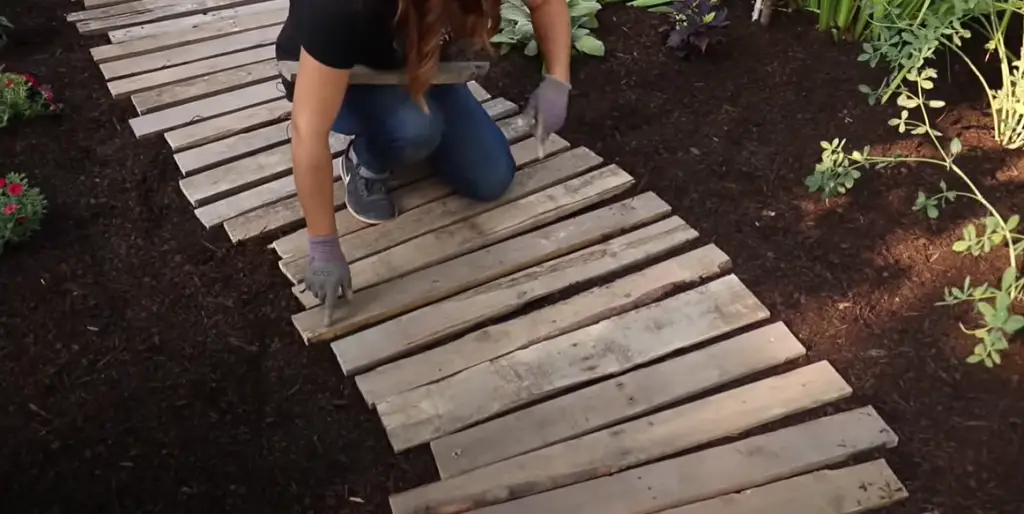
Resin Bound or Resin Bonded Gravel Surfacing
Resin-bound or resin-bonded gravel surfacing is an ideal choice if you’re looking for a modern and stylish alternative to traditional paving materials. The resin binds the stones together, creating a strong and hard wearing surface. As it’s permeable, it facilitates water drainage while preventing weeds from growing through it.
Artificial Grass
Artificial grass is quickly becoming one of the most popular choices for garden pathways as it has several benefits over a natural turf. It requires little maintenance and can be laid directly onto an existing surface without any extra preparation work. Artificial grass looks great all year round and can easily be cleaned with just a quick hose down when necessary. It also provides a soft, comfortable surface which makes it ideal for gardens with children or elderly visitors.
Loose Aggregate
Loose aggregate is an ideal choice for pathways that need to be durable and easy to maintain. It is available in a variety of colors, sizes, and textures so you can quickly create a unique look for your garden. Loose aggregate also provides good drainage during wet weather conditions and can easily be topped up or replaced when necessary.
Concrete Slabs
Concrete slabs are a cost-effective and easy-to-maintain option for pathways, patios, and driveways. The slabs come in various shapes and sizes so you can create a truly unique look in your outdoor space. Concrete slabs also provide good drainage during wet weather as well as slip resistance which is ideal if you have young children or elderly visitors who visit your garden regularly [2].
Save money with these cheap DIY garden path ideas
Get the coastal look with a cheap decking board path
Decking boards are a great way to create an attractive and low-cost garden path. A standard 4x4ft decking board can be bought for as little as 12 dollars, meaning you could cover quite a large area at a relatively low cost. The natural wood grain of the boards can give your garden a coastal look and feel, while also providing a durable pathway that will last for many years with minimal maintenance.
Go wild with pebble paths
Pebbles are another great choice when it comes to creating cheap garden paths. Pebbles come in all shapes and sizes and they’re very affordable – you can get 20kg bags of small pebbles for around 15 dollars each. They’re also incredibly easy to install – just lay the pebbles onto a bed of sand and they’ll stay in place. The natural look of pebbles can give your garden an earthy, wild look that will bring it to life.

Create a unique pattern with brickwork paths
Bricks are perfect for creating unique patterns on your garden path. Bricks come in all sorts of shapes, sizes, and colors, so you can create any kind of design you like. Be sure to buy bricks specifically designed for outdoor use – these are usually frost-proof and won’t degrade over time. Prices vary depending on the size and quality of the bricks, but you should be able to find something suitable for around 20 dollars per square foot.
Make it extra special with flagstone paths
Flagstones are the perfect choice for a more luxurious garden path. Plus, they’re extremely durable and will last for many years without needing much maintenance. Prices vary depending on the size and quality of the stones, but you should be able to find something suitable for around 25 dollars per square foot.
Give your garden a personal touch with homemade stepping stones
If you want to add a personal touch to your garden path then why not make your own stepping stones? All you need is some cement, sand, and gravel – plus whatever decorative items you’d like to use such as shells, pebbles, or even glass pieces. The cost of the materials will depend on how many stones you want to make, but because you’re making them yourself it should be relatively inexpensive. Once they’re done, you can be sure that your garden path will have a truly unique look.
Repurpose reclaimed bricks to cut down on costs
If you don’t want to buy new bricks for your garden path, then why not try reclaiming old bricks? There are lots of places where you can find old bricks, such as demolition sites and building supply stores. The cost of reclaimed bricks depends on the condition and size, but they should be much cheaper than buying new ones. Plus, repurposing old materials is a great way to reduce your environmental impact.
Add some color with painted stones
Painted stones are a great way to add some vibrancy and color to your garden path. All you need is some small rocks or pebbles, paint in whatever colors you like, and some sealant or varnish to keep the colors from fading. You can also use this technique to create patterns and designs, such as hearts or stars. The cost of the materials will depend on how many stones you want to make, but it should be relatively inexpensive.

Use budget-friendly landscaping bark
Landscaping bark is a great low-cost option for garden paths. It’s lightweight, easy to install, and provides a cushioning surface for walking. Plus, it comes in all sorts of colors so you can get creative with your design. A 25-liter bag of landscaping bark should cost around 10 dollars, making it an affordable choice for anyone on a budget.
Create curves with curved boards
If you want to create curved pathways in your garden then curved boards are the way to go. Curved boards come pre-cut and ready to install – all you need is some stakes or posts to hold them in place. They’re also surprisingly affordable – most curved board packs will cost between 30 and 50 dollars.
Sort it with inexpensive railroad ties
Railroad ties make a great choice for garden pathways. They’re strong, durable and can easily be cut to the desired length. Plus, they come in all sorts of colors so you can find something that fits with your overall design. A pack of five railroad ties should cost around 25 dollars. No matter your budget or style, there are plenty of options out there to create a beautiful garden path that will add charm and character to your outdoor space. With these ideas, you’ll be able to transform your yard into something special without breaking the bank.
Select a colorful slate for a bold DIY path
Slate is a great option for garden paths – it looks elegant and can add a touch of sophistication to any outdoor space. Plus, it comes in all sorts of colors so you can find something that perfectly suits your design. Prices vary depending on the size and quality of the slate, but you should be able to find something suitable for around 25 dollars per square foot.
Lay a tiled path yourself to save on labor costs
If you’re looking for a more intricate design then why not lay your own tiled path? It may seem daunting, but all you need is some tile adhesive and grout – plus tiles that match your garden’s overall design. Plus, laying the path yourself will save on labor costs and give you the satisfaction of completing it yourself. The cost of materials will depend on how many tiles you need, but it should be relatively inexpensive [3].
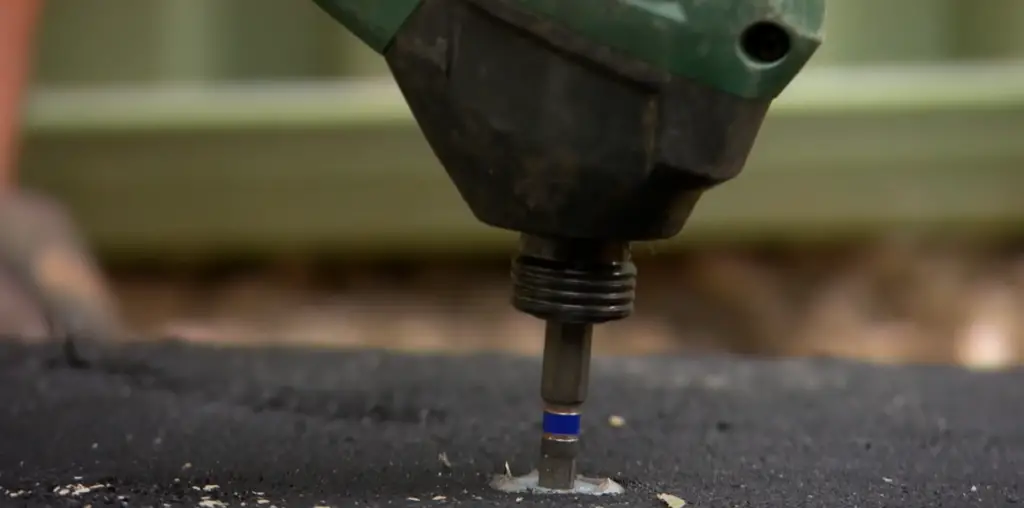
What do you need to make a Cheap DIY Garden Path?
Making a garden path doesn’t have to be expensive or complicated. With some creative thinking, you can create a beautiful pathway for your garden that is both cheap and easy to make. Here are the materials you will need:
- Gravel – Gravel is a great way to add texture and interest to your garden path without breaking the bank. It also adds drainage, which prevents water from pooling on your walkway.
- Pavers – Pavers come in many different colors and sizes, making it easy to find one that matches the style of your garden path. You can lay them out in straight lines or on curves for a more decorative look.
- Mulch – Mulch is an inexpensive way to add color and texture to your garden path. It also helps keep weeds from growing in between the stones or pavers.
- Edging – To keep your path looking neat and tidy, you can use edging along the sides of it. This will help define the edges and prevent soil erosion.
- Construction Adhesive – If you are using paving stones, construction adhesive will help hold them together and make sure they stay in place.
- Garden Tools – You’ll need a few basic tools such as a shovel, rake, hoe, wheelbarrow, and level to create a beautiful garden path.
- Safety Gear – Make sure you wear safety gear such as gloves and protective eyewear when using any of the tools. Once you have all your materials, you’re ready to start building your garden path.
How to make a Garden Path?
When creating a garden path, there are many factors to consider. First, decide the overall design and shape of the path. Consider how it will look when complete and if you will use any specific materials or landscaping elements such as stones or plants to enhance the design.
Once your foundation is set, start laying out your chosen material on top of it. Be sure to start along the edges and work your way toward the center. Use a spade to level out any bumps or depressions as you build up the path. Finally, finish off the path with edging along the perimeter to keep everything in place. This can be done using wooden boards, rocks, plastic edging, or whatever material best suits your garden design. Once complete, you are ready to enjoy walking along your new garden path!
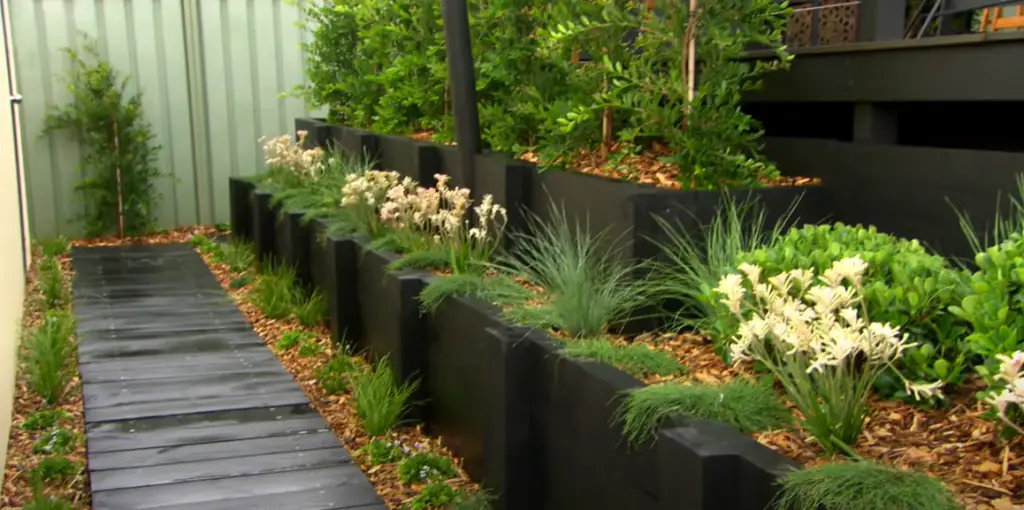
FAQ
What is the cheapest way to build a pathway?
The cheapest way to build a pathway is to go for DIY options such as using paving stones, gravel, and other materials that are readily available in your local home improvement store. You can also choose to use recycled materials or upcycle existing materials around your property to create the desired design. If you’re looking for something more professional, you can opt for interlocking concrete pavers or precast concrete slabs which are both very durable and can be easily installed. Hiring a contractor may be an additional expense but they will ensure the job is done properly. Whatever option you decide on, make sure it suits your budget and preferences while providing a safe, long-lasting pathway.
What type of material should I use to build a pathway?
The material you choose for your pathway will depend on the type of surface and appearance you’re hoping to achieve. For instance, gravel is a great option if you’re looking for an informal or rustic look. You can also opt for brick pavers or natural stone if you want something more formal. If you’re going for a modern look, try using concrete with stamped patterns or colored concrete that can be dyed in various shades. Whichever material you decide on, make sure it fits into your budget and won’t require too much maintenance over time.
How long does it take to build a pathway?
The time it takes to build a pathway depends on several factors including the size and complexity of your design, the type of materials used, and whether you’re doing it yourself or hiring a contractor. Generally speaking, building a pathway from scratch can take anywhere from one day to several days depending on the amount of work required. If you’re hiring a contractor, they should be able to provide an accurate estimate as to how long it will take them to complete the job.
Is it difficult to maintain a pathway?
The amount of maintenance needed for your pathway will depend largely on the type of material used. For instance, gravel pathways may need more frequent cleaning since debris and dirt can accumulate easily. Interlocking pavers are generally easier to maintain since they don’t require as much cleaning and can be easily replaced if any of the stones break or become damaged. In general, pathways made out of more durable materials such as brick or concrete should require less maintenance over time.
Are there any safety considerations to keep in mind when building a pathway?
Yes, there are several safety considerations that you should keep in mind when building a pathway. Make sure the surface is even and sturdy to prevent tripping hazards and make sure it’s wide enough to accommodate two-way traffic. Additionally, make sure your pathway has good drainage so water won’t pool on top of it and cause slippery conditions. Finally, include proper lighting along the path so people can navigate it safely at night.
What is the cheapest DIY garden path?
The cheapest DIY garden path is probably one made out of gravel or mulch. These materials are often the most affordable and require minimal maintenance over time. They also provide a more informal, natural look that can be easily incorporated into any type of landscape design. Additionally, they are very easy to install since they don’t require any specialized tools or skills. However, keep in mind that gravel and mulch pathways can become slippery when wet so you may need to add grates or edging along the sides for extra stability.
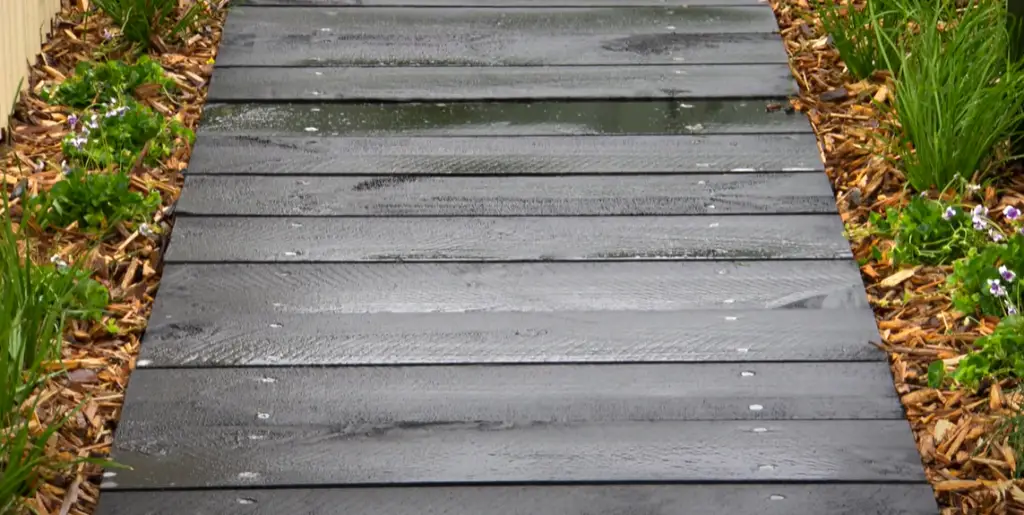
Are there any creative ways to build a pathway?
Yes! Building a pathway doesn’t have to be boring or conventional – there are plenty of creative options available for adding personal flair to your landscape. For instance, try using colored concrete with stamped patterns or mosaics. You can also use a combination of different materials such as stones and gravel to create an interesting visual texture. Finally, consider incorporating lighting along the pathway to bring out its beauty at night. With a little bit of creativity, you can create a unique and eye-catching pathway that will be the envy of all your neighbors!
What is the purpose of a garden path?
The primary purpose of a garden path is to provide an easy and attractive way to get from one area of the landscape to another. Pathways can also help frame certain areas in your garden, like entrances or sitting areas, making them more inviting and appealing. Additionally, pathways can add visual interest to the landscape by creating patterns or shapes with different materials. Finally, pathways can also help reduce soil erosion since they allow you to walk around without trampling delicate plants.
Why do you need a garden?
A garden can provide numerous benefits, both aesthetic and practical. A garden can be a beautiful way to add color, texture, and life to your property. Additionally, growing your own fruits and vegetables can save you money while providing fresh produce for your family. Finally, the act of gardening itself is therapeutic and provides an opportunity to get outside and enjoy nature. Regardless of why you want a garden, having one will surely enhance your home and lifestyle!
Do I need to edge a garden path?
Yes, edging your garden path is recommended for a few reasons. First, it will help keep the gravel or mulch from spilling onto nearby plants or lawns. Additionally, an edge can also provide extra stability and reduce problems with erosion. Finally, edging can give your pathway a more finished look and add some decorative flair to your landscape. There are many different types of edging materials available including wood, stone, metal, and plastic so you should be able to find one that suits your style.
What are the different types of paths?
The most common types of paths include gravel, brick, cobblestone, stepping stones, and concrete. Gravel pathways are the cheapest and easiest to install. Brick pathways offer a more refined look and can be arranged in various patterns for an interesting visual effect. Cobblestone pathways are perfect for adding a rustic touch to your landscape. Stepping stones provide a flexible option for navigating around trees and other obstacles in the yard. Finally, concrete is the best choice if you need something that’s durable and low-maintenance.
How do I choose a garden path?
Choosing a garden path will depend on your budget, landscape design, and personal preference. First, consider the size and shape of your yard to decide how much material you’ll need and where it should go. Next, think about the type of material you want – do you prefer a natural look or something more modern? Finally, take into account any features such as stairs or curves that might require special materials or installation techniques.
Useful Video: 30 Walkway Ideas For Inspiration | diy garden
Conclusion
Cheap DIY Garden Paths are a great way to enhance the look of your garden while still being cost-effective. Adding a path can create visual interest and make it easier to access certain parts of your garden. While these paths may not be as durable as professionally-made ones, they will still last for years if properly taken care of. With simple materials and some creativity, you can create your own unique garden path that will make outdoor living in your backyard even more enjoyable. So don’t let the price tag stop you from adding this fun feature to your home – try building one today!
References:
- https://buffalo-niagaragardening.com/2018/10/02/paths-can-make-your-garden-more-beautiful-easier-to-use/
- https://neograss.co.uk/7-types-of-garden-pathway/
- https://www.gardeningetc.com/design/cheap-diy-garden-path-ideas





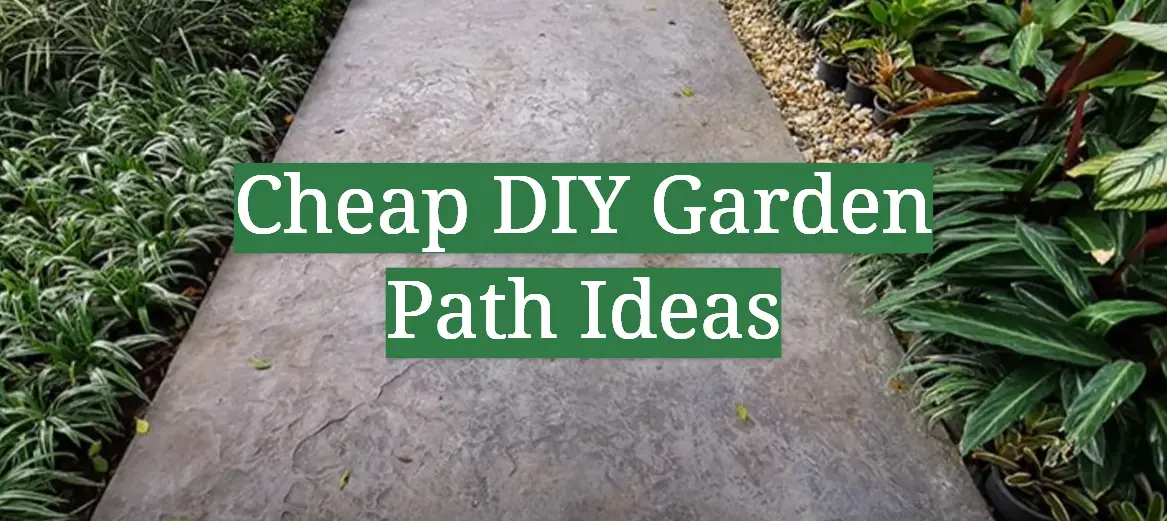
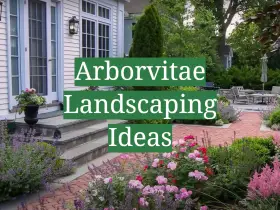
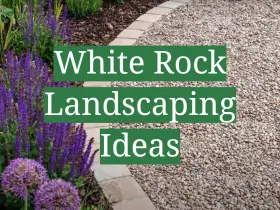

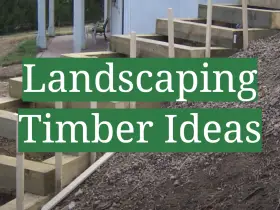
Leave a Reply
View Comments